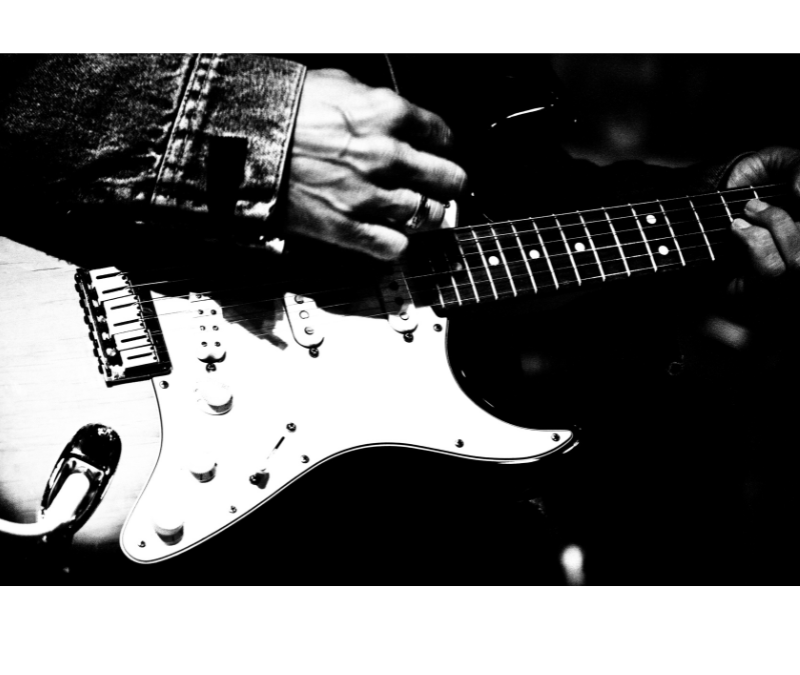Unleash your inner guitar virtuoso with our comprehensive guide to mastering the major pentatonic scale. Whether you’re a beginner or an experienced guitarist looking to expand your melodic repertoire, this article will equip you with all the tools you need to unlock unlimited musical possibilities.
The major pentatonic scale is a must-know for any serious guitarist. In this guide, we’ll break down the scale’s structure and explore its various positions on the fretboard, ensuring you have a solid foundation to build upon.
But we won’t stop there. We’ll delve into advanced techniques, such as string bending and hybrid picking, that will allow you to add soulful expression and dynamics to your playing.
Additionally, we’ll provide practical tips and exercises to help you internalize the scale and develop your improvisational skills. Whether you want to solo over blues, rock, or country tunes, the major pentatonic scale will become your go-to tool for crafting memorable melodies.
So grab your guitar, strap in, and get ready to explore the melodic universe that awaits. Get ready to master the major pentatonic scale and take your guitar playing to new heights.
Understanding the Structure and Formula of the Major Pentatonic Scale
The major pentatonic scale consists of five notes derived from the major scale. These notes create a unique sound that is widely used in various musical genres. To construct the major pentatonic scale, we take the root note, the major second, major third, perfect fifth, and major sixth from the major scale. The formula for the major pentatonic scale is: 1, 2, 3, 5, 6.
Once you understand the formula, it becomes easier to apply it to any key on the guitar. For example, if we start with the root note of G, the major pentatonic scale in the key of G would be G, A, B, D, and E. By memorizing this formula, you can effortlessly play the major pentatonic scale in any key.
Now that you understand the basic structure and formula of the major pentatonic scale, let’s explore its various positions on the guitar fretboard. This will allow you to play the scale in different octaves and positions, expanding your melodic possibilities.
Benefits of Mastering the Major Pentatonic Scale
Mastering the major pentatonic scale offers a multitude of benefits for guitarists. Firstly, it provides a solid foundation for understanding music theory. By studying the major pentatonic scale, you’ll gain a deeper understanding of intervals, scales, and the relationship between notes.
Furthermore, the major pentatonic scale can be used in every type of genre and song. Whether you’re playing blues, rock, country, or even jazz, the major pentatonic scale is a fantastic scale choice for solos. Another benefit of mastering the major pentatonic scale is that it enhances your ear for melodies. As you practice and internalize the scale, you’ll start to recognize its sound and be able to anticipate the notes that work well together. This will greatly improve your ability to create memorable and melodic guitar solos.
By combining it with other scales, modes, and techniques, you can create your own melodies that have a upbeat sound. Applying major arpeggios to the scale can be a useful way to create melody. Learn how to play major pentatonic scales with our tool called the FretDeck
Techniques for Practicing the Major Pentatonic Scale
To master the major pentatonic scale, it’s crucial to develop efficient and effective practice techniques. Here are a few tips to help you make the most out of your practice sessions:
- Start Slow: When learning a new scale, it’s important to start slow and focus on accuracy. Begin by playing the scale at a comfortable tempo, ensuring that each note is clear and distinct. Gradually increase the speed as you become more comfortable. Make sure that your fingering is accurate.
- Use a Metronome: Practicing with a metronome is essential for developing good timing and rhythm. Set the metronome to a slow tempo and play the scale in time with the beats. This will help you internalize the scale and improve your overall sense of timing. Timing & phrasing are wonderful tools for creativity on the guitar. Check out this online metronome tool!
- Practice in Different Positions: Experiment with playing the major pentatonic scale in different positions on the guitar neck. This will not only help you develop a deeper understanding of the scale, but also improve your fingerboard knowledge and dexterity. Try playing a major pentatonic scale on guitar with each string set.
- Practice with Backing Tracks: Playing along with backing tracks is a great way to apply the major pentatonic scale in a musical context. Look for backing tracks in different keys and genres, and improvise using the major pentatonic scale. This will help you develop your improvisational skills and enhance your phrasing on the guitar fretboard.
“If you want to play something that you can’t, you need to see and hear yourself doing it in your minds eye. It will start to happen”
~ Steve Vai
Remember, consistency is key when practicing the major pentatonic scale. Set aside dedicated practice time each day and gradually increase the difficulty of your exercises. With regular practice and patience, you’ll soon find yourself effortlessly navigating the guitar neck using the major pentatonic scale.
Transposing the Major Pentatonic Scale to Different Keys
One of the great advantages of mastering the major pentatonic scale is its ability to be transposed to different keys. Transposing the scale allows you to play the same melodic patterns and shapes in different positions on the guitar neck, giving you access to a wider range on the guitar fretboard.
To transpose the major pentatonic scale, you need to understand the relationship between the scale’s notes and the root note. For example, if you’re playing the major pentatonic scale in the key of A, and you want to transpose it to the key of D, you simply need to move all the notes up a whole step (two frets) on the guitar neck. A major pentatonic is played on the 5th fret and D major pentatonic is played on the 10th fret.
As you become more comfortable with transposing the major pentatonic scale, try experimenting with different keys and positions. This will not only enhance your understanding of the scale, but also improve your ability to navigate the guitar neck and play in different keys.
Applying the Major Pentatonic Scale in Improvisation
Now that you have a solid understanding of the major pentatonic scale on guitar, it’s time to apply it in improvisation. Improvisation is the art of creating music spontaneously, and the major pentatonic scale provides a perfect foundation for improvising melodic guitar solos.
When improvising with the major pentatonic scale, it’s important to start simple and gradually build complexity. Begin by playing melodic phrases using the scale’s notes, focusing on creating a memorable melody. As you become more comfortable, experiment with rhythmic variations, bending notes, and adding slides to create more dynamic solos. One trick that I’d use with my students is to play a solo with the major pentatonic with only 3 notes. This is a great way to play because it restricts the number of notes that you use and forces you to be creative.
To further enhance your improvisational skills, try incorporating techniques such as vibrato, hammer-ons, and pull-offs into your playing. These techniques add depth and character to your solos, allowing you to convey emotion and musicality.
Another effective technique for improvisation is call-and-response. Start by playing a short melodic phrase using the major pentatonic scale, and then respond to it with a contrasting phrase. This creates a musical dialogue and adds interest to your solos.
Remember, improvisation is all about expressing yourself and having fun. Don’t be afraid to make mistakes or take risks. The more you practice and experiment with the major pentatonic scale, the more confident and creative you’ll become in your improvisations.
Common Licks and Patterns Using the Major Pentatonic Scale
Now that you’re comfortable with the major pentatonic scale, let’s explore some common licks and patterns that you can incorporate into your playing. These licks and patterns serve as building blocks for creating your own guitar solos.
- The Box Pattern: The box pattern is one of the most common patterns used when playing the major pentatonic scale. It involves playing the scale within a specific area on the guitar neck, usually spanning four or five frets. This pattern is highly versatile and can be moved up and down the neck to play the scale in different keys.
- Slides and Bends: Slides and bends are essential techniques for adding expression and emotion to your solos. Experiment with sliding between notes within the major pentatonic scale and the minor pentatonic, as well as bending notes to create a bluesy and soulful sound.
- Double Stops: Double stops involve playing two notes simultaneously, creating a harmonized sound. Incorporate double stops into your solos by playing two adjacent notes within the major pentatonic scale. This technique adds depth and richness to your playing. Double stops are one of my favorite techniques to use in improvisations. Try playing a melody with a few double stops.
- Motifs: Motifs involve repeating a pattern of notes within the major pentatonic scale. Experiment with different motifs, such as ascending or descending patterns, to create interesting and memorable guitar solos.
By incorporating these common licks and patterns into your playing, you’ll develop a strong foundation for improvisation and expand your melodic vocabulary. As you become more comfortable, don’t be afraid to experiment and create your own unique licks and patterns using the major pentatonic scale.
Advanced Concepts and Extended Pentatonic Scales
Once you have a solid grasp of the major pentatonic scale, you can explore advanced concepts and extended pentatonic scales. These concepts and scales will take your playing to the next level.
One advanced concept is the concept of pentatonic substitutions. Pentatonic substitutions involve replacing certain notes within the major pentatonic scale with other notes from related scales or modes. This creates unique and interesting melodic patterns that add complexity and sophistication to your playing.
For example, you can substitute the major third of the major pentatonic scale with the minor third from the minor pentatonic scale. This creates a bluesy and soulful sound that is commonly used in blues and rock guitar playing.
Another advanced concept is the concept of extended pentatonic scales. Extended pentatonic scales involve adding additional notes to the major pentatonic scale, expanding its melodic range. For example, you can add the major seventh or the ninth to the major pentatonic scale to create a more colorful and expressive sound.
Experiment with these advanced concepts and extended pentatonic scales to push the boundaries of your playing. By incorporating them into your improvisations and compositions, you’ll develop a unique and personal musical voice.
Integrating the Major Pentatonic Scale with Other Scales and Modes
To truly unlock the unlimited melodic possibilities of the major pentatonic scale, it’s important to integrate it with other scales and modes. By combining the major pentatonic scale with other musical elements, you can create captivating and diverse guitar lines.
One effective way to integrate the major pentatonic scale with other scales is through modal interchange. Modal interchange involves borrowing chords and scales from related modes to create tension and interest in your playing.
For example, you can use the major pentatonic scale over a major chord progression, and then switch to the mixolydian scale over a dominant chord. This creates a contrasting sound that adds depth and complexity to your solos.
Another technique for integration is chord-tone soloing. Chord-tone soloing involves focusing on the notes within a specific chord and using them as a foundation for your improvisation. By targeting chord tones and using the major pentatonic scale as a framework, you’ll create melodic lines that perfectly complement the underlying chord progression.
Experiment with these integration techniques and explore different scales and modes that work well with the major pentatonic scale. The more you expand your musical vocabulary and understanding, the more versatile and expressive your guitar playing will become.
Conclusion and Final Thoughts
Remember, mastering the major pentatonic scale takes time and dedication. Be patient with yourself and enjoy the process of exploration and experimentation. As you continue to practice and apply the scale in different musical contexts, you’ll develop a unique and personal playing style that sets you apart as a guitarist.
So grab your guitar, dive into the melodic universe of the major pentatonic scale, and let your creativity soar. Whether you’re playing in a band, jamming with friends, or simply strumming alone in your bedroom, the major pentatonic scale will be your faithful companion for crafting unforgettable melodies.
Rock On!!!!

Download The FretDeck & Pentatonic Secrets Course!
Download Our Course










